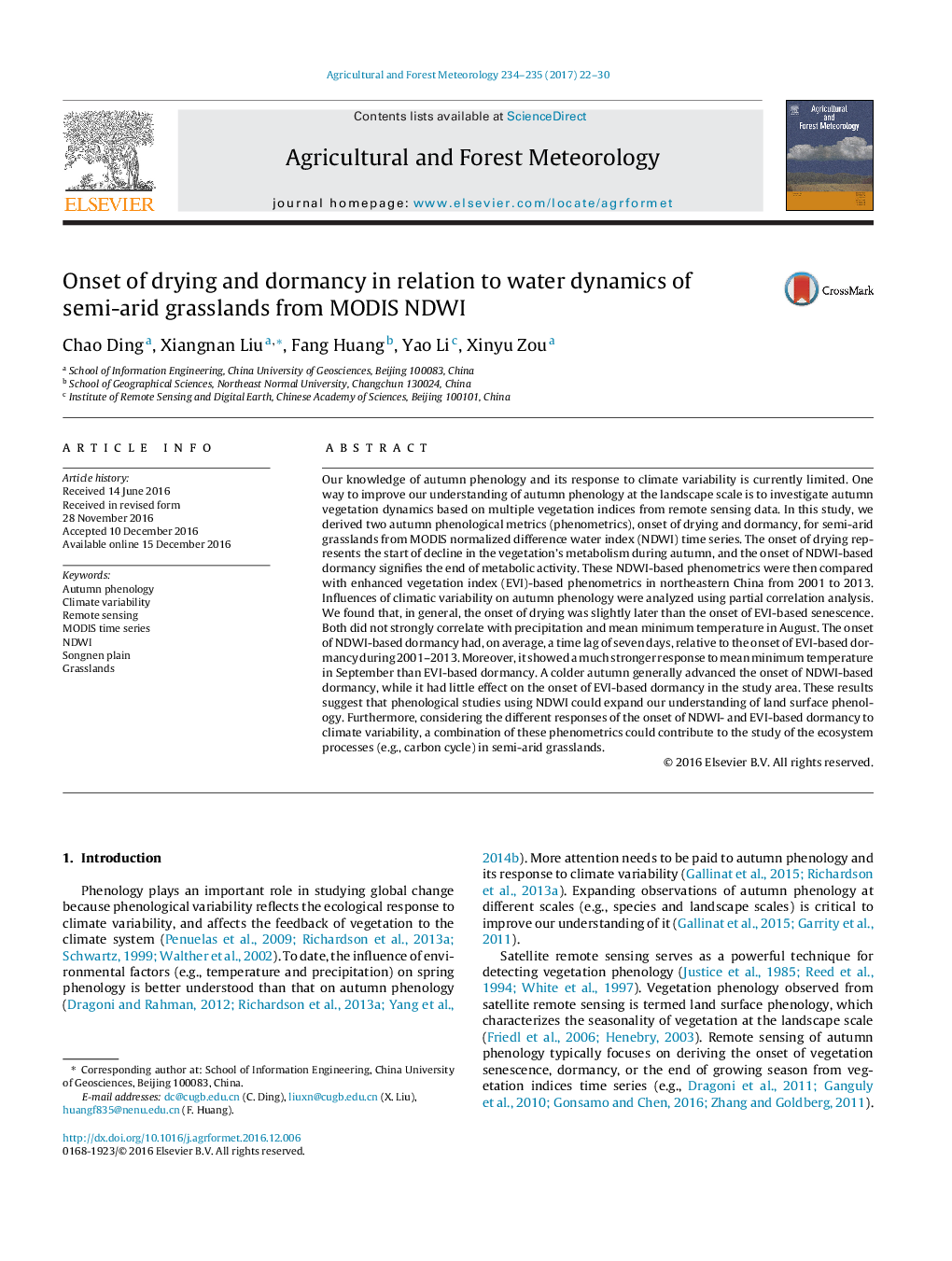| Article ID | Journal | Published Year | Pages | File Type |
|---|---|---|---|---|
| 6457966 | Agricultural and Forest Meteorology | 2017 | 9 Pages |
â¢We defined the onset of drying and dormancy for semi-arid grasslands from NDWI.â¢The onset of NDWI-based dormancy was generally later than EVI-based dormancy.â¢A colder autumn minimum temperature advanced the onset of NDWI-based dormancy.â¢Autumn minimum temperature had little effect on the onset of EVI-based dormancy.â¢Combining NDWI and EVI could help to further understand vegetation dynamics.
Our knowledge of autumn phenology and its response to climate variability is currently limited. One way to improve our understanding of autumn phenology at the landscape scale is to investigate autumn vegetation dynamics based on multiple vegetation indices from remote sensing data. In this study, we derived two autumn phenological metrics (phenometrics), onset of drying and dormancy, for semi-arid grasslands from MODIS normalized difference water index (NDWI) time series. The onset of drying represents the start of decline in the vegetation's metabolism during autumn, and the onset of NDWI-based dormancy signifies the end of metabolic activity. These NDWI-based phenometrics were then compared with enhanced vegetation index (EVI)-based phenometrics in northeastern China from 2001 to 2013. Influences of climatic variability on autumn phenology were analyzed using partial correlation analysis. We found that, in general, the onset of drying was slightly later than the onset of EVI-based senescence. Both did not strongly correlate with precipitation and mean minimum temperature in August. The onset of NDWI-based dormancy had, on average, a time lag of seven days, relative to the onset of EVI-based dormancy during 2001-2013. Moreover, it showed a much stronger response to mean minimum temperature in September than EVI-based dormancy. A colder autumn generally advanced the onset of NDWI-based dormancy, while it had little effect on the onset of EVI-based dormancy in the study area. These results suggest that phenological studies using NDWI could expand our understanding of land surface phenology. Furthermore, considering the different responses of the onset of NDWI- and EVI-based dormancy to climate variability, a combination of these phenometrics could contribute to the study of the ecosystem processes (e.g., carbon cycle) in semi-arid grasslands.
